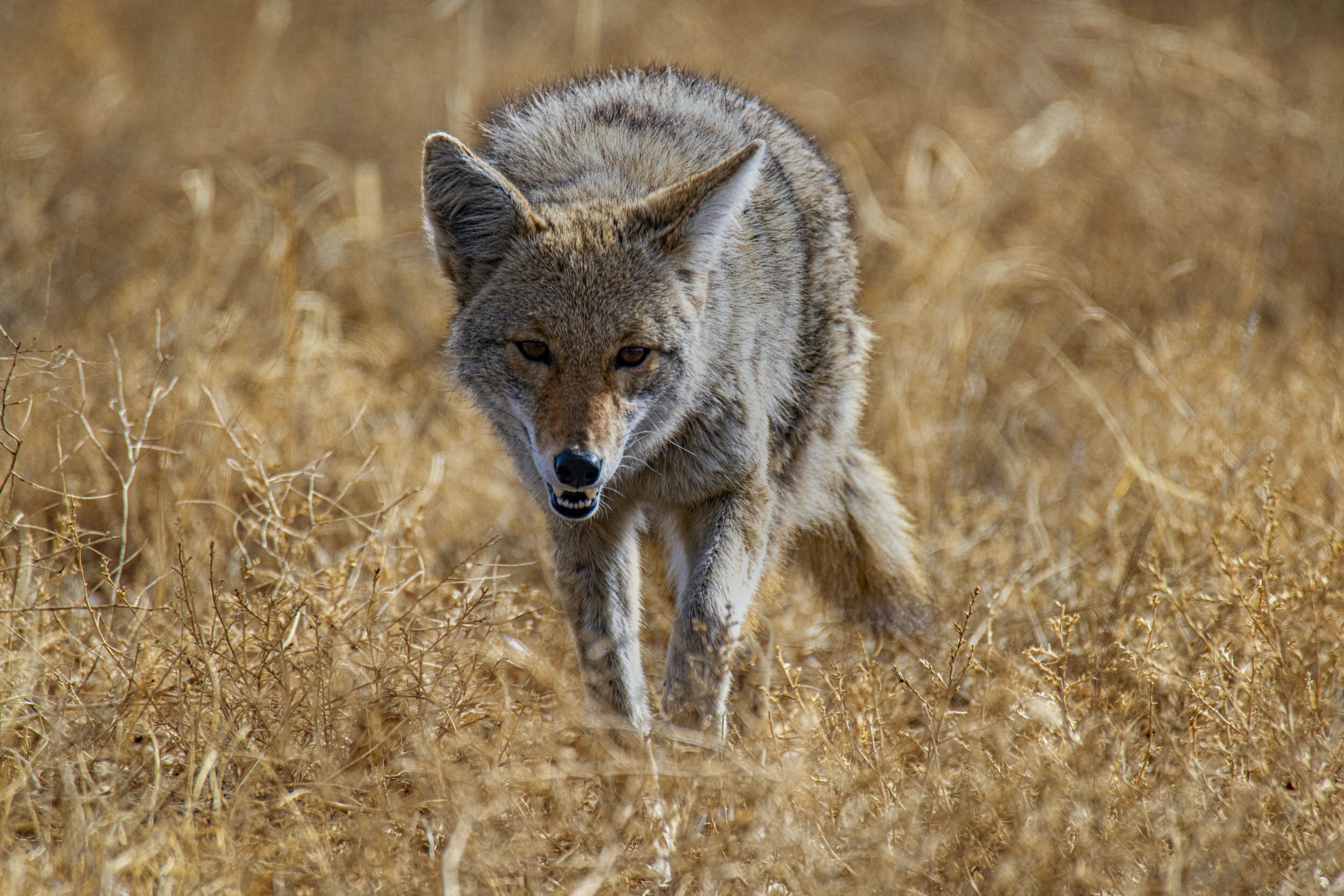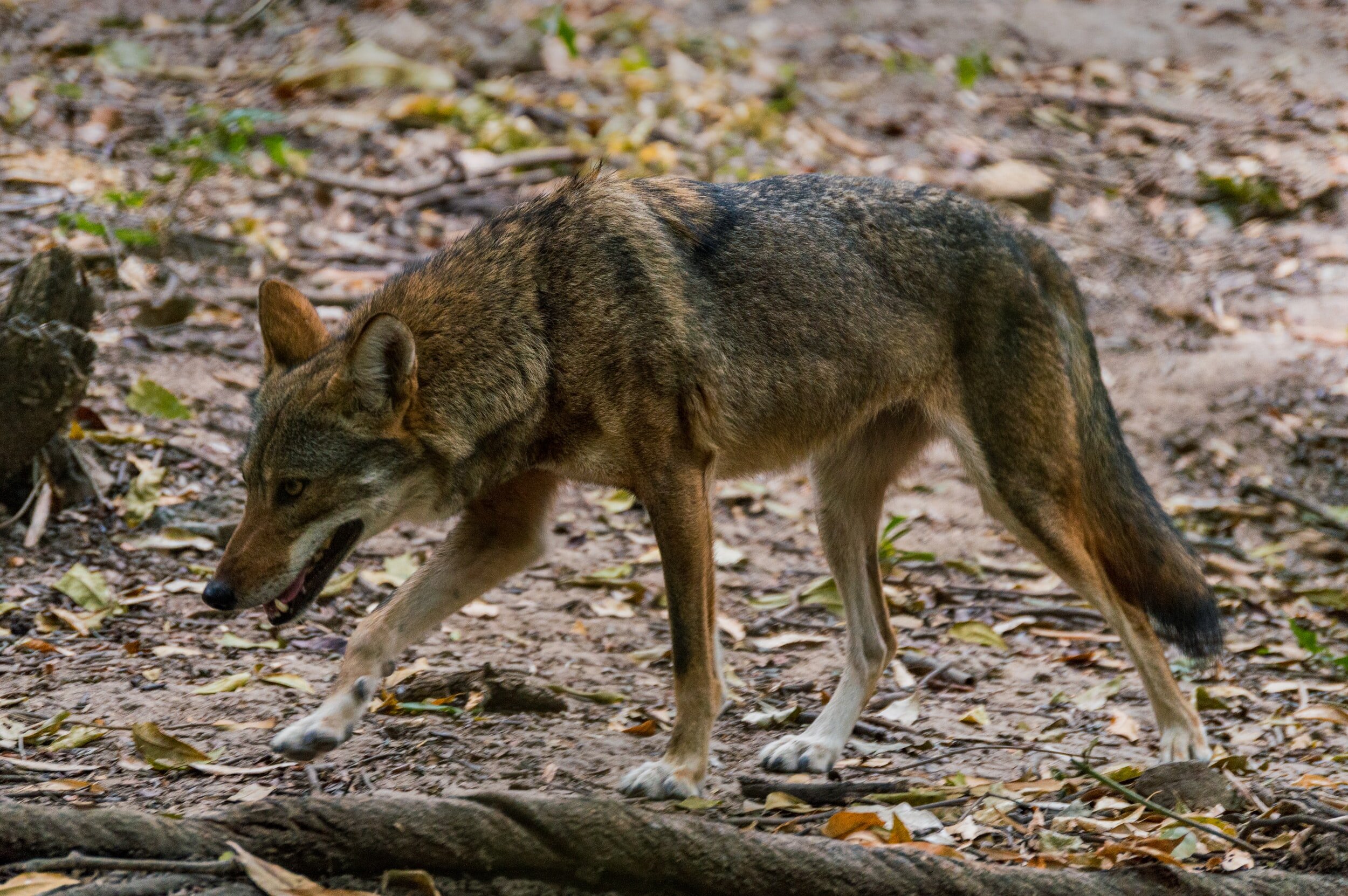
LIVING IN HARMONY WITH COYOTES
GENERAL TIPS:
Do not leave pet food outside.
Do not let your pets outside unsupervised after dark.
Pick up fallen fruit.
Do not leave windows or sliding doors without screens open or unattended.
Close garage doors.
Never intentionally feed a wild animal! Feeding wildlife increases human encounters, which endangers animals and harms the ecosystem.
IF A COYOTE NEEDS HELP:
Since coyotes have the potential to spread rabies, do not handle the animal yourself. Call the Santa Barbara Wildlife Care Network and a vaccinated professional will rescue the coyote: (805) 681-1080
You can also call Santa Barbara County Animal Services: (805) 681-5285 or Santa Barbara City Animal Control: (805) 963-1513
IF A COYOTE APPROACHES YOU:
DO NOT RUN or turn your back.
Pick up small children and pets.
Make loud noises.
Raise your arms to look big.
Calmly back away.
IF YOU SEE A COYOTE IN YOUR YARD:
Do not approach or try to befriend it.
Bring small children and pets inside.
Make sure the coyote has an escape route by opening gates.
Make loud noises.
Spray water towards the coyote.

COYOTE FAQ
-
This is not an indication that the animal is unwell, it could be a mother taking a break from her babies to find food or rest a little. Winter and Spring represent mating months for animals, meaning an increase in activity during the day. If an animal appears alert and active, it is best to leave them alone.
Many seemingly nocturnal animals, like skunks, opossums, and coyotes, are crepuscular, meaning they are most active at dawn and dusk. It is completely normal to see them at these times.
If you believe animal is sick or injured, call the Helpline: (805) 681-1080
-
Sarcoptic mange is an infection of the skin caused by a parasitic mite. The most common clinical signs of mange are hair loss, thick crusting, and intense itchiness in the infested animal.
While any mammal can suffer from mange, coyotes and foxes are more commonly susceptible to the disease. The mite itself is not deadly, but it opens up a pathway for infection or vision problems.
Thankfully, this condition is treatable.
If you see a coyote you suspect has mange, please take detailed photographs of the animal, note the location, and call the SBWCN Helpline: (805) 681-1080
-
Live-trapping and relocation is inhumane. If animals are introduced into areas they are unfamiliar with, they do not know where food, water, or shelter sources are. There may be other animals in the area that have diseases to which the introduced animal has never been exposed. The introduced animal may be encroaching on another's territory.
Trapping is only a temporary solution. The reasons animals are visiting your property must be addressed before they stop visiting. If you get rid of one, another will simply take its place.
Traps often do not catch the intended targets. Other animals, including pets, are just as likely to enter traps. Animals caught in traps often injure themselves trying to escape.
